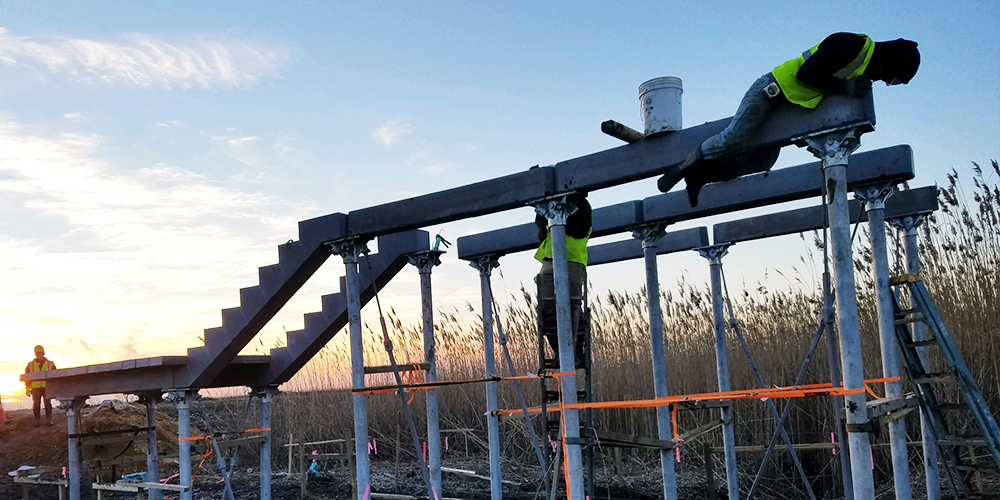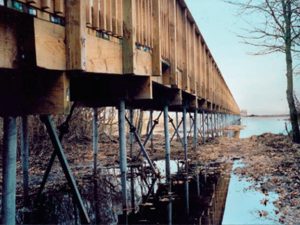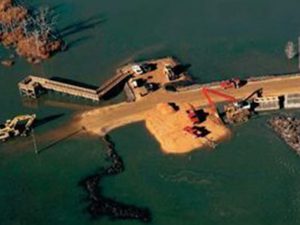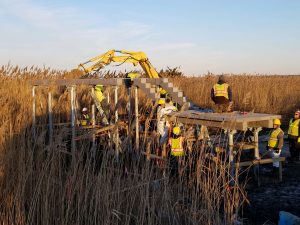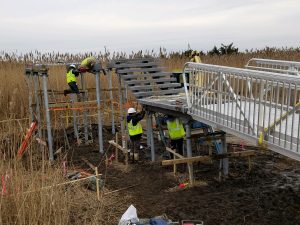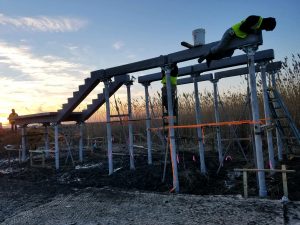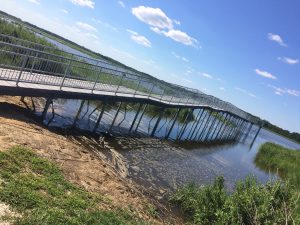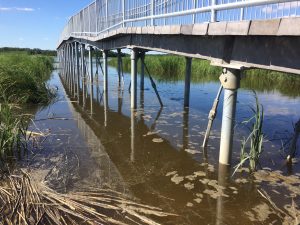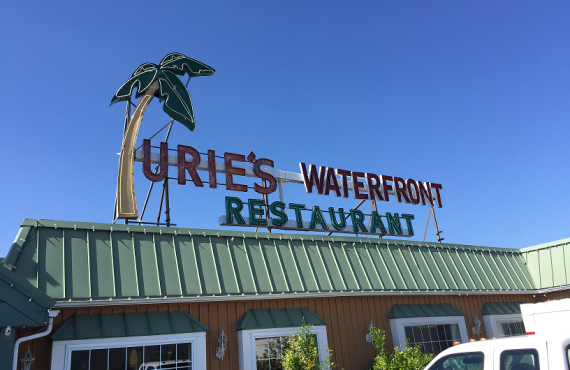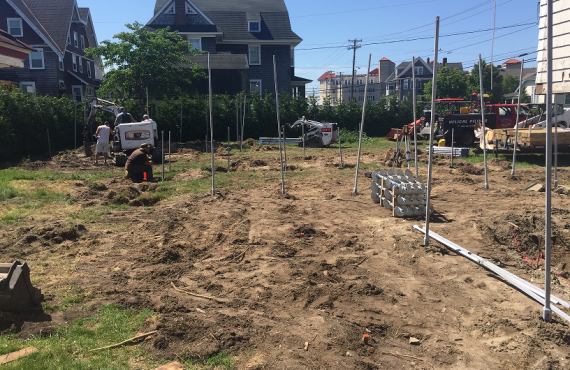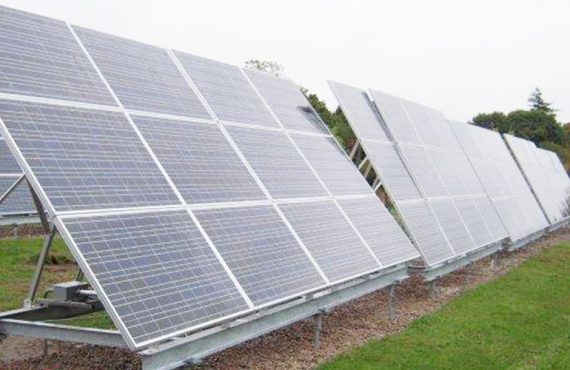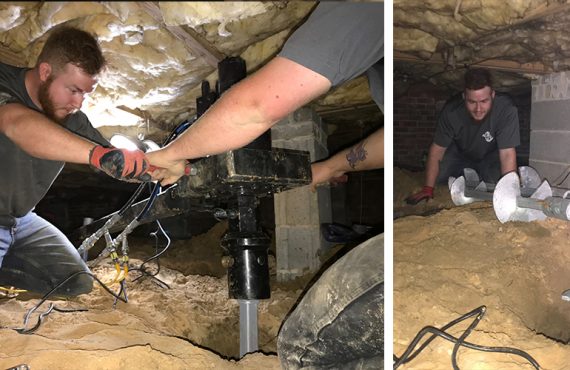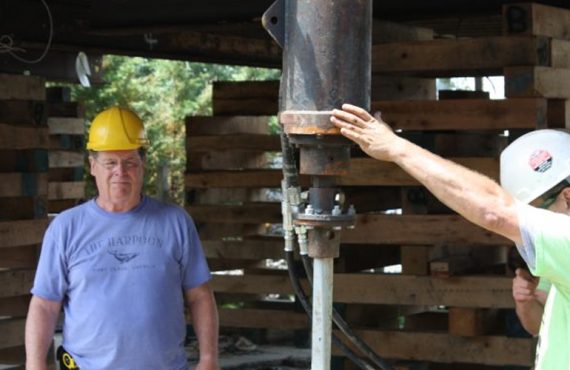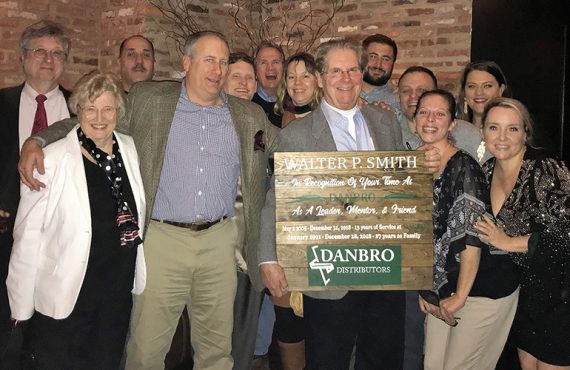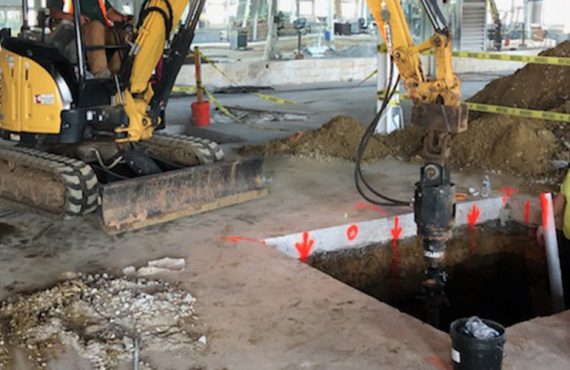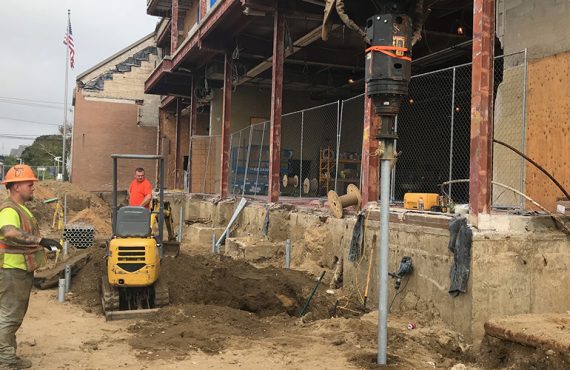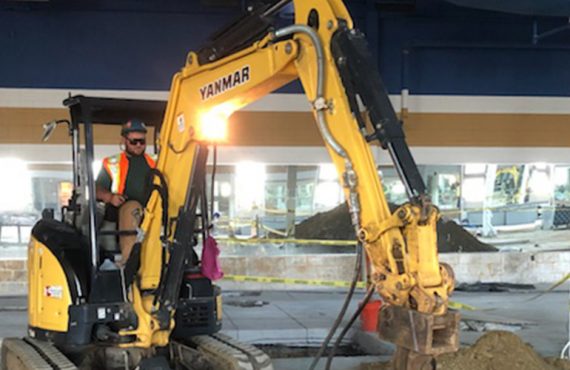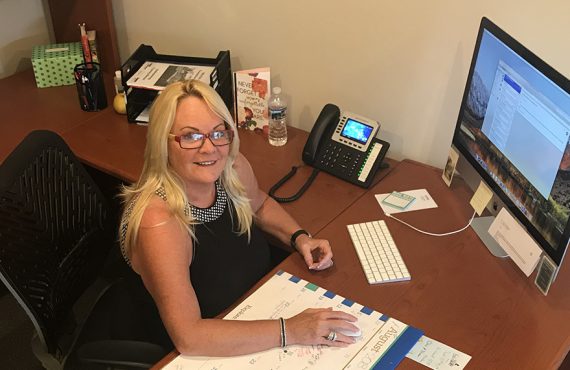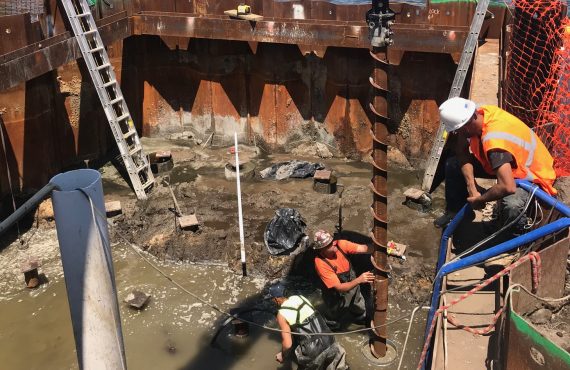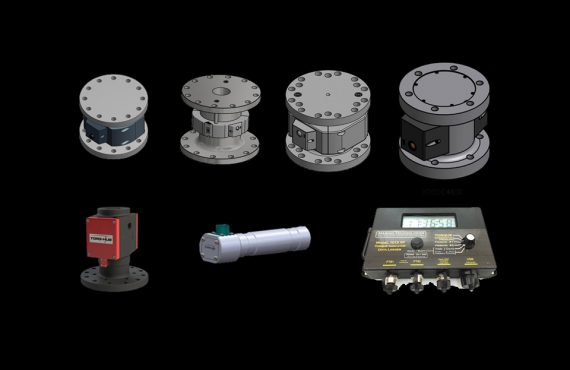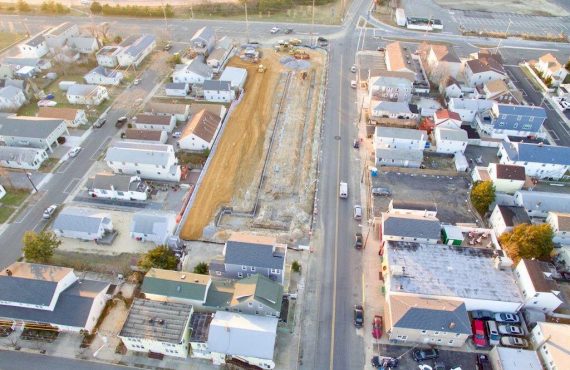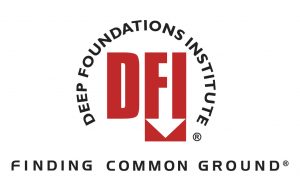In 1997, Public Service Enterprise Group embarked on an estuary enhancement project on the Delaware and Maurice rivers in Commercial Township New Jersey to restore salt hay farms to their natural environment.
This project also sought to reverse damage to marine life caused by runoff from the cooling tower at the Salem Nuclear Power Plant. Estuaries were undammed, dug out, and returned to their original form; once again acting as a natural hatchery environment for fish and other marine life.
In addition, as a service to the public, PSEG pledged to build walkways through this sensitive ecosystem, so humans could traverse the scenic wetlands, enjoying the vistas abundant with waterfowl and other marine life.
Enter Danbro, a fledgling helical pier distributorship with few installers and none who had the expertise and experience to tackle such a large and challenging project. However, Danbro was the subsidiary of D’Angelo Brothers, a 113-year-old excavation and foundation contractor.
With the aid of D’Angelo Brothers, Danbro tackled the project with 870 helical piles in this fragile environment under the watchful eyes of Geo-Con, the general contractor , engineers Woodward Clyde and Roy F. Weston, and PSEG. Danbro hired a sub-contractor, JF Builders, to build the walkway. On the crew was one carpenter, a Polish immigrant, whose American dream did not involve working in a mosquito-infested swamp during a sweltering New Jersey summer.
Fast forward to 2012 and Superstorm Sandy. The surge from the Delaware River wiped out the timber-treated walkways, leaving the original helical pier supports sticking up out of the mud with the superstructure destroyed. PSEG decided to rebuild a storm-resistant walkway, compliant with the new base flood elevation, and one that could withstand another major natural event.
While the helical piles supporting the boardwalk did not fail, they had to be replaced to achieve the load. IDEAL 4.5-inch pipe piles and 1.5-inch IDEAL square shaft battered piles were installed to approximately 27 feet. The rugged, storm-resistant, PermaTrak concrete platforms increased the load requirement to a 30-ton ultimate. The elevations were varied but higher than Sandy flood levels. The observation decks were the highest elevation at 10 feet above grade.
The installation was challenging due to the sensitive environment and the platform piles needed to meet a strict one-eighth to one-quarter-inch tolerance to accept the bolts from the PermaTrak concrete platforms. Small equipment on stacked marsh mats was employed as it was in 1997.
A lot of the original players on this project are gone or have been acquired. Founder Roy F. Weston is deceased, but Weston Solutions continues. Woodward Clyde was acquired by URS and Geo-Con, the original general contractor, is not around anymore.
Danbro returned to supply the material and guess who the helical installer was? Remember that Polish immigrant with a hammer and 100 mosquito bites? Art Kozoil, owner and operator of South Jersey Helical Piers Inc. returned to the scene, proving once again that everything that goes around, comes around.
Art began installing helical piles on a part-time basis in the late 90s and has since become one of the most highly respected environmental and deep foundation contractors on the east coast. Environmental sensitivity, restricted access, and mobilization challenges are a typical experience for SJHP, so the challenges of Germantown and Basket Flats observation decks and walkways were a matter of course.
The late fall and early winter timing of the project was a plus. The greatest challenge, according to Kozoil, was “properly aligning the bolts.” Asked about the major difference between 1997 and now, he said, “Still a little bit of a pain in the neck, but this time- no mosquitos!”


